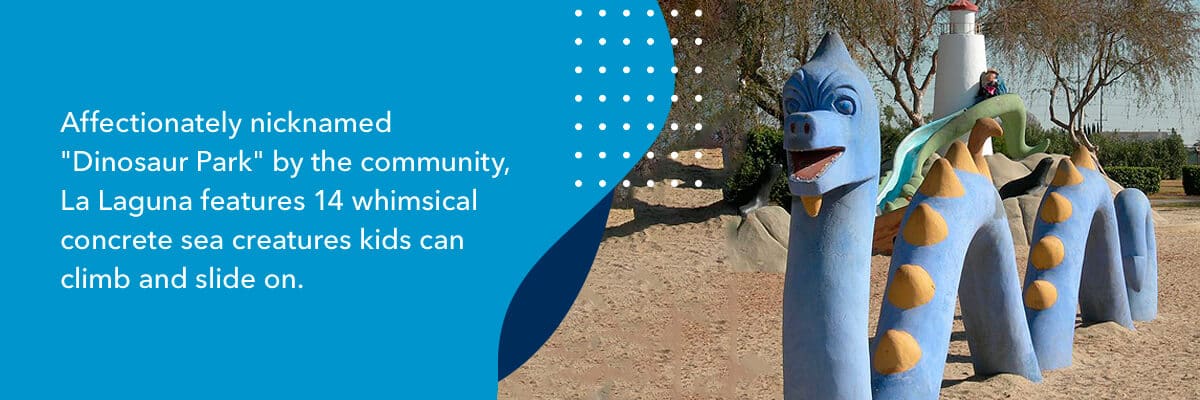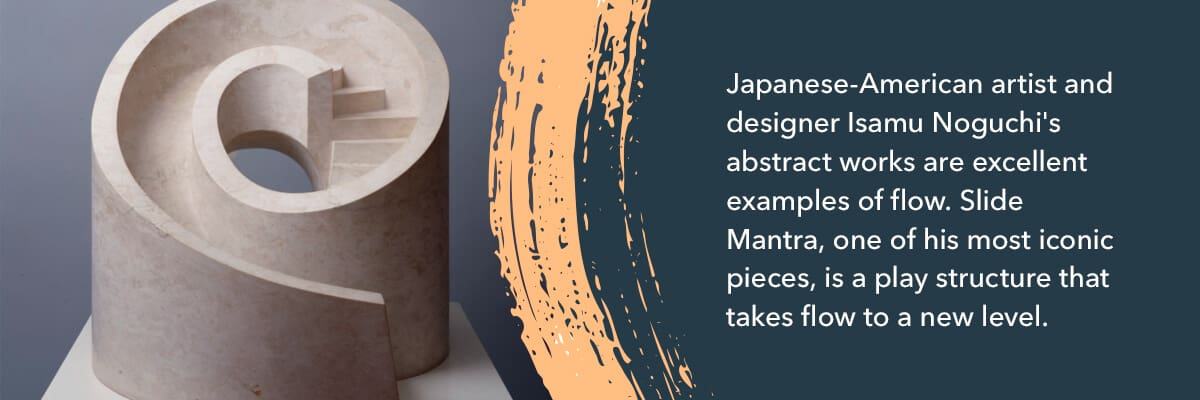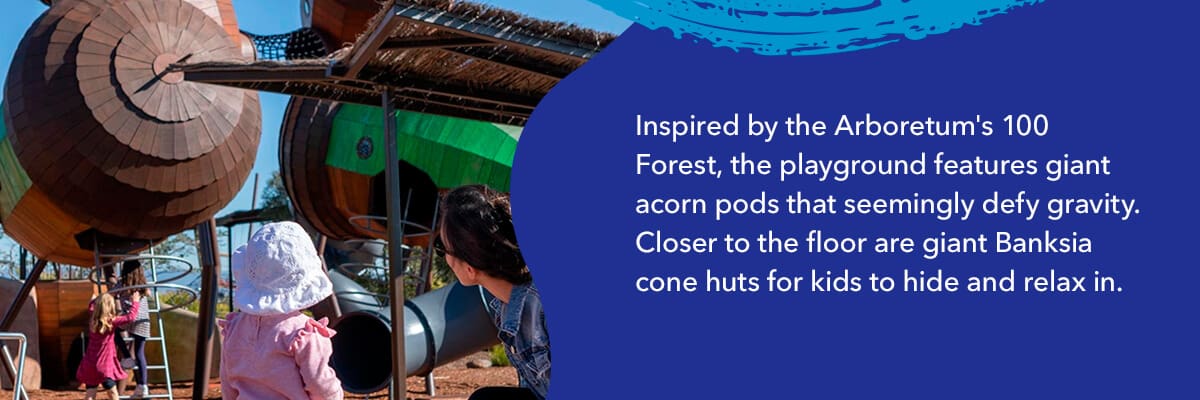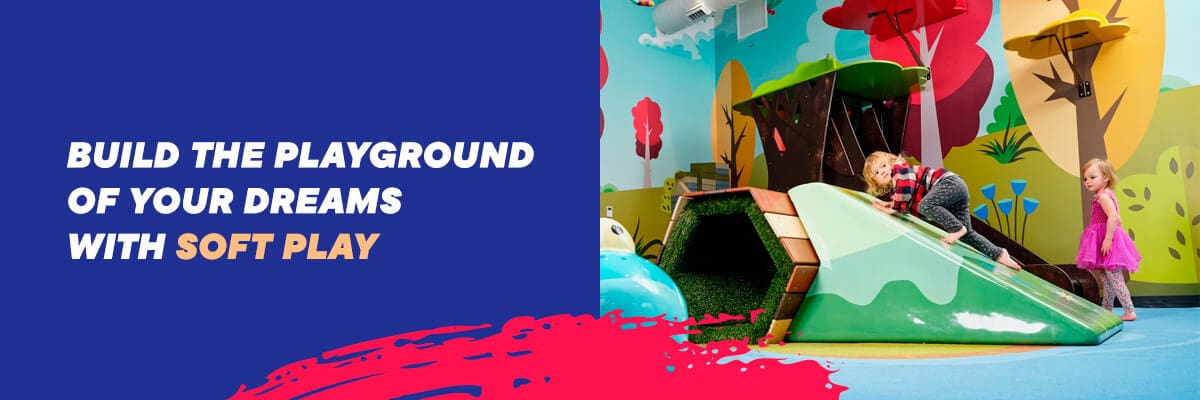12 Design Lessons From Famous Playground Architects

12 Design Lessons From Famous Playground Architects
When it comes to art, studying the greats can help you create great work. The same is true for playgrounds. Understanding playground pioneers and their design philosophies can help you generate ideas.
From ball pits to giant birds, these famous playground designers revolutionized playground design. We’ll break down why each architect’s work is so special to help you in your playground design.
Read the full article or jump to a specific section:
- 1. Simple Doesn’t Mean Boring
- 2. Playgrounds Should Have Flow
- 3. Memorable Structures Fire the Imagination
- 4. Playgrounds Don’t Have to Be on the Ground
- 5. Playgrounds Can Educate
- 6. Playgrounds Should Be Exciting
- 7. Playground Structures Should Serve Kids
- 8. Playgrounds Should Inspire Activity
- 9. Playground Materials Matter
- 10. Playgrounds Should Invite Participation
- 11. Designs Should Start With “Why”
- 12. Playgrounds Should Have a Touch of Whimsy
- Build the Playground of Your Dreams With Soft Play
1. Simple Doesn’t Mean Boring
Just because something is simple doesn’t mean kids won’t like it. In fact, they might find it more interesting than even the most complex gadgets on the market. Basic structures can help kids exercise their creativity and their muscles by sparking their imaginations.

Benjamin Dominguez: La Laguna de San Gabriel
Mexican sculptor Benjamin Dominguez came to the United States in 1956. Before his immigration, his most famous work was on enclosures at the Mexico City Zoo. But in the U.S., his work took him in a different direction: playgrounds.
Dominguez’s last public work, La Laguna de San Gabriel, is a fantastic example. Affectionately nicknamed “Dinosaur Park” by the community, La Laguna features 14 whimsical concrete sea creatures kids can climb and slide on. Mexican concrete sculptor Benjamin Dominguez created La Laguna in the 1960s as his final public work.
La Laguna is free of the bells and whistles many have come to expect from modern playgrounds. Kids have to use their minds to drive playtime, which can provide a refreshing break from the noise of everyday life.
The community certainly seems to think so. In 2006, when the city made plans to demolish La Laguna, people who had fond memories of the park banded together to found Friends of La Laguna, a nonprofit dedicated to preserving playgrounds.
The group raised $700,000 to save the park — and they succeeded. La Laguna is now a registered national landmark, and it’s been restored to its former glory.
The lasting popularity of Dominguez’s simple yet expressive monsters proves that, sometimes, less really is more.
2. Playgrounds Should Have Flow
We all know what it feels like when distractions break our concentration. It’s like a spell gets broken — suddenly, it’s tough to get back to what we were doing before.
Kids at play experience the same thing. It’s a bummer when something breaks into their fantasy worlds.
That’s what makes the concept of flow so important in playground design. Kids should be able to move from one point to the next to stay engaged, especially in a world where distractions are everywhere. The key is to create dynamic, seamless structures that allow kids to stay in their fantasies for longer.

Isamu Noguchi: Slide Mantra
Japanese-American artist and designer Isamu Noguchi’s abstract works are excellent examples of flow. Slide Mantra, one of his most iconic pieces, is a play structure that takes flow to a new level.
Although the M.C. Escher-esque slide looks like an optical illusion, it’s completely functional. You climb up the staircase and slide down around the loop. Then, you can climb back up again without any significant transitions.
While Noguchi was a prolific sculptor, he only created one U.S. playground. The Noguchi Playscape in Atlanta’s Piedmont Park features colorful, minimalistic structures for open-ended play.
3. Memorable Structures Fire the Imagination
Think back to the playgrounds you visited in childhood. Most of them likely had at least one recognizable figure, whether it was an animal or a person. While minimalist designs are cool, interesting figures with recognizable features also spark the imagination — just in a different way.
Turning a giant figure into a playground can serve a double purpose. For one thing, it offers local kids a place to play. And for the other, it helps enhance the community’s appearance.
Tom Otterness: Playground
With long, climbable arms and slides for legs, Otterness’s 24 ½-foot tall sculpture of a man in Hell’s Kitchen, New York, is a beloved community feature. Located in front of the Silver Towers apartment complex, the structure, which goes by the simple title “Playground,” is the fourth in a series of six and the first to be installed publicly.
As one of the most prolific sculptors in the United States, Otterness has created similar works for parks and playgrounds across the country — and around the world. His Other Worlds playground in the Hamad International Airport in Qatar features multiple giant people kids can climb up and into, making it a public art piece and a playground at the same time.
Niki de Saint Phalle: The Golem
French pop artist Niki de Saint Phalle’s 1972 sculpture “The Golem” is another noteworthy example, but for a different reason. The sculpture, which resembles a mix between a cow and a blobfish, was initially rejected by the Jerusalem Parks Commission on the grounds that it would scare kids away.
But that was de Saint Phalle’s point. Placing something scary in a safe environment helps kids develop confidence by encouraging them to investigate and conquer their fears. The Commission ended up installing the structure in 1976, and it’s still around today.
Nicknamed HaMifletzet — Hebrew for “The Monster” — the Golem has become a treasured local landmark.
4. Playgrounds Don’t Have to Be on the Ground
When it comes to exciting play spaces, thinking outside of the box isn’t enough. You have to think off the ground, too. These designers have taken their playgrounds to a whole new level by experimenting with other surfaces.
Wibit Sports GmbH: Floating Water Playgrounds
German play company Wibit Sports GmbH, founded by Robert Cirjak and Romann Rademacher, is a water play pioneer. The company was the first in the world to create floating playgrounds.
The secret lies in their LEGO-inspired interlocking design. Since 2008, Wibit has used modular systems to build sprawling custom play structures spelling out words and promoting big brands like Coca-Cola.

Toshiko Horiuchi MacAdam: Woods of Net
The Woods of Net playground, an exhibit at the popular Open Air Museum in Hakone, Japan, takes another approach to playground surfacing. This gigantic suspended playground hovers above the floor and is entirely made from artist Toshiko Horiuchi MacAdam’s colorful hand-crocheted netting.
The playground offers various options for play at different levels throughout the pavilion. Children can climb into the suspended canopy or play with the bean bags and swinging crochet spheres on the ground floor. By offering play elements on multiple levels, the Woods of Net caters to kids of various ages and abilities.
5. Playgrounds Can Educate
While we often consider play to be a break from education, kids are always learning. In addition to providing a space for them to learn important social norms and develop their motor skills, educational playgrounds can help kids learn more about the world around them.

T.C.L.: Pod Playground
Taylor Cullity Lethlean’s (T.C.L.) Pod Playground in the National Arboretum in Canberra, Australia, is a wonderful example. Inspired by the Arboretum’s 100 Forest, the playground features giant acorn pods that seemingly defy gravity. Closer to the floor are giant Banksia cone huts for kids to hide and relax in.
T.C.L. stuck to an earthy, neutral color scheme for this playground to enhance the sensory experience of smell and texture. All the surrounding plant life is native to the region, except for one acorn-bearing oak tree, which serves as the playground’s focal point.
Incorporating native fauna into a playground helps kids develop a strong relationship with the environment, which can help them grow into healthy, well-rounded adults.
6. Playgrounds Should Be Exciting
When kids play, they don’t think about things like safety and efficiency. They’re too curious! But many modern playgrounds prioritize safety at the expense of fun and freedom. Incorporating risk and unpredictability into your playground provides a more rewarding play experience.
Meghan Talarowski: Play and Learn
After observing kids playing in both England and the U.S., architect Meghan Talarowski made a critical realization — kids want to take risks. Unlike their sanitized, super-safe American counterparts, Talarowski found that British playgrounds are riskier by design. She also observed that the playgrounds put an emphasis on unstructured play.
And British playgrounds are for more than the kids. They include amenities like cafes to give parents and caregivers their own space to relax while their kids played the afternoon away.
Talarowski took her findings back with her to the U.S., where she founded Studio Ludo, which studies play behaviors in kids and designs playgrounds that match their observations. One of the studio’s most interesting projects introduces play elements into an unusual space — a public library.
The Play and Learn project in Philadelphia, Pennsylvania, combines learning and play by placing a climbing wall among the bookshelves. The wall seamlessly transitions into the shelves, blending the environments together to create a uniquely engaging space for young kids.
7. Playground Structures Should Serve Kids
Too often, we focus on what we want kids to do when we design playgrounds. We forget that we’re not the ones using the equipment — our kids are.

Eric McMillan: Children’s Village
Many modern playgrounds prioritize safety first and excitement second. But in the 1970s, British architect Eric McMillan revolutionized playground design by doing the exact opposite. Rather than focus on how adults believe children should play, he designed structures that he would have wanted to play on as a small child.
His most famous playground, Children’s Village, was informed by his tumultuous upbringing. From a forest of suspended punching bags to a series of spinning wooden ladders, McMillan’s design eschewed overly safe structures in favor of absolute chaos.
Contrary to what you might expect, Children’s Village was an immediate success. While the playground closed in 2002, it represented an iconic moment in play history.
After building Children’s Village, McMillan went on to invent the ball pit. Inspired by the motion of pickled onions rolling around in a glass jar, he ordered an enormous quantity of light plastic balls to create a ball pit in San Diego. The idea caught on like wildfire in a dry forest. And the rest is history.
8. Playgrounds Should Inspire Activity
It’s one thing to build a play structure that looks fantastic and works well. It’s another to create a playground kids actually want to use.
While many of the architects we’ve discussed so far have taken a more open-ended approach to play, George Millay’s approach is more similar to today’s playground designers in that he provided defined things for kids to do with the equipment.

George Millay: Wet n’ Wild Water Park
SeaWorld creator George Millay founded Wet’ n Wild Orlando, the first U.S. water park, in 1977. While the park closed down in 2016, it provides some important lessons for playground designers of the future.
Millay’s philosophy was heavily inspired by McMillan’s Canadian Water Caper, another iconic Ontario Place attraction. He claimed that playgrounds need more than things for kids to look at — they need to provide things for kids to do. And Wet n’ Wild certainly delivered on that front.
Originally branded as a water playground, Wet n’ Wild combined the unstructured nature of playgrounds with amusement park thrills and water to create an engaging new way to cool down in the summer. While similar concepts had been around for several years, Millay was the first to create a single cohesive water park for which he could charge admission.
9. Playground Materials Matter
Denmark-based playground manufacturer Monstrum is very intentional with its material choices. Founded by former set designers Ole Barslund Nielsen and Christian Jensen, the company creates theatrical, imaginative playgrounds for kids of various ages and abilities.
According to Nielsen, the warm, natural feel of wood makes it an excellent building material for playgrounds. Wood is also a more sustainable choice than most plastics because it’s a renewable resource, meaning it regenerates faster than we can use it up.
Let’s take a closer look at what makes Monstrum’s playgrounds so interesting.
The River Giants
The River Giants, Monstrum’s playground in The Gathering Place Riverfront Park in Tulsa, Oklahoma, is a perfect example of how playground architects can combine flow, high-quality materials, imagination and local flavor to create a unique space for free play.
While the two 23-foot-tall climbing herons look delicate, Monstrum designed their sturdy iron frames with deep foundations to resist Tulsa’s characteristic winds and tornadoes. Older kids can climb up the herons and slide down the attached 12-foot slides and crawl through the connected steel mesh tunnels for an adventure in the sky.
Near the herons is a large wooden paddlefish for younger kids to climb on and crawl through. The gaps between the paddlefish’s wooden planks allow light to filter through, creating a dramatic atmosphere for play. Plus, soft ground and low wooden platforms give kids a safe environment.
The Giant Owls
Located in Stockholm, Sweden, the Giant Owls playground offers an assortment of wooden structures for kids to play on. Like The River Giants, this park’s structures resemble the local wildlife, with enormous wooden owl slides, a giant climbable beetle family and mushroom-shaped spinners.
Because nights are so long during Scandinavian winters, the park’s wooden structures feature integrated lighting so kids can keep playing even after the sun has gone down. The wooden boards allow the light to shine through, creating a soft, fantastical setting for imaginative play.
10. Playgrounds Should Invite Participation
One concept that’s easy to forget in modern playground design is loose parts, or items kids can pick up and use to create their own unique environments. Loose parts are different from standard playground structures in that they provide kids with an opportunity to play on their own terms. As opposed to structures built specifically for the purposes of sliding, climbing and hiding, loose parts let kids dictate the terms of their playtime.
A sandbox is an interesting example of a loose part because it gives kids an artistic medium to build with. Whether they create elaborate structures with water and sand or just run their toys through them, they’re exercising their minds and bodies.
Friedrich Froebel: The Sandbox
Before the mid-19th century, it was hard to find safe places for underprivileged city kids to play. Wealthy kids had yards of their own, while rural families provided their children with plenty of open space to run around. But the only places inner city kids had to play were the crowded, dangerous streets.
The early sandbox, or sand berg, arose as a solution. Friedrich Froebel, the founder of the first kindergarten, realized the immense benefits of early childhood education. His experience training elementary school teachers taught him that a stimulating environment was key to kids’ mental and physical development. He promoted the value of free play through his work, emphasizing the importance of the garden to child development.
Sand bergs began appearing in Berlin’s public parks in the 1850s. Inspired by Froebel’s success with the sand bergs, a group of philanthropists in Boston began installing them in churchyards and schoolyards to create safe play spaces for local kids in the 1880s.
The structured sandbox came later, with architects like Aldo van Eyck finding creative ways to contain the sand without interfering in the kids’ play world.
11. Designs Should Start With “Why”
When you’re designing a playground, you need a clear vision of your purpose. What is your reason for building the playground? What design elements and considerations can help you meet that goal?

Aldo van Eyck: Designing With Purpose
Dutch architect Aldo van Eyck kept purpose in mind when designing playgrounds in post-WWII Amsterdam. Van Eyck aimed to nurture childhood creativity and promote social engagement with his minimalistic playground designs. These structures encouraged kids to think outside the box and play on their own terms.
Instead of building structures with clearly defined purposes, like slides and swings, van Eyck designed playgrounds with elements that had many potential uses. For example, a series of round cement objects at ground level could be climbers, or they could be bases for hide-and-seek. The possibilities are endless, which is what makes van Eyck’s philosophy so appealing.
12. Playgrounds Should Have a Touch of Whimsy
The most interesting playgrounds in the world provide a fantastical escape from the real world. By providing structures that provoke the imagination, whimsical, unique playgrounds deserve their spots in tourist guides and national registries.

Rivera, Martín and Llobell: Parque Gulliver
When it comes to whimsical playgrounds, Parque Gulliver in Valencia, Spain, is an excellent example. The Valencia City Council commissioned architect Rafael Rivera, artist Manolo Martín and designer Sento Llobell to create the playground in 1990.
The three created a giant, stylized sculpture of the main character from Gulliver’s Travels, Jonathan Swift’s iconic 18th-century novel. Just like the Lilliputians, the tiny people Gulliver encounters on his first voyage, kids can safely climb all over the giant structure and explore.
Gulliver, which sprawls across 70 meters (about 230 feet), contains enormous slides and stairways hidden along his body and clothing. Some features are large enough for both kids and adults to slide together, so parents of small children can accompany their children.

Build the Playground of Your Dreams With Soft Play
The main takeaway of all these artists’ work is simple — to create a truly amazing playground, you’ve got to serve the kids first. Provide a space that facilitates imagination and seamless, exciting play, and you’ve got something magical on your hands.
